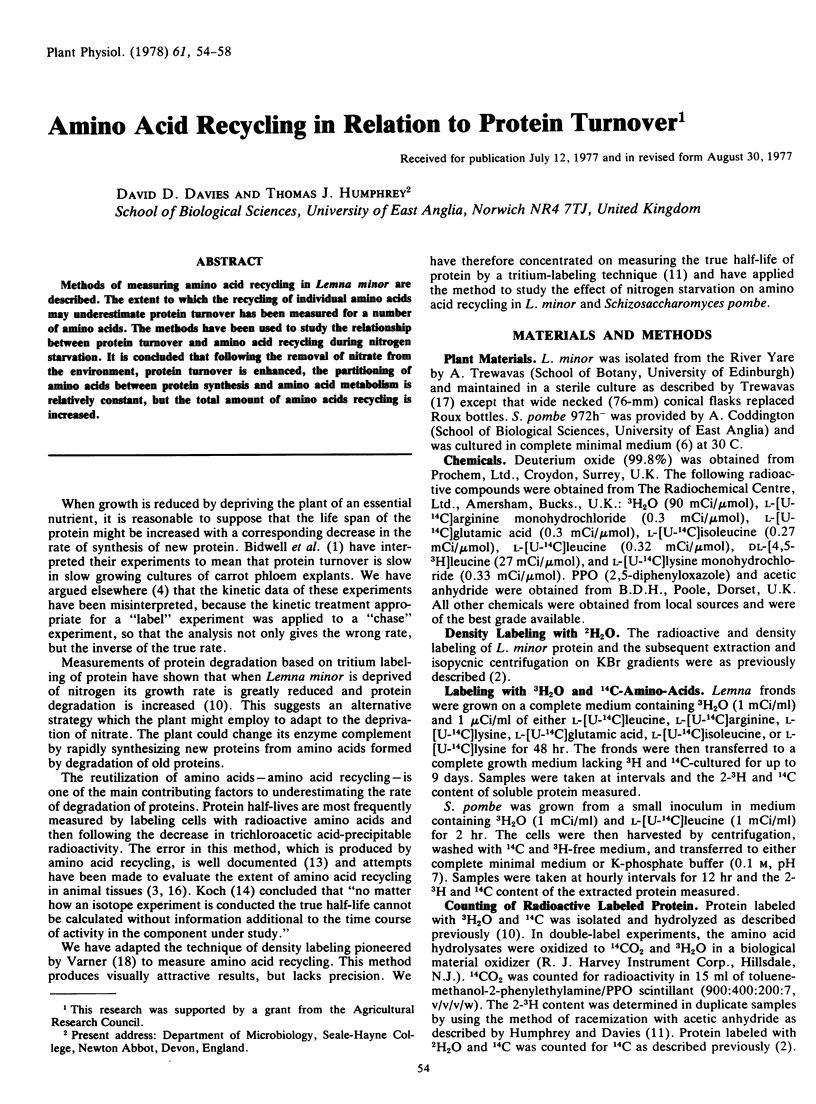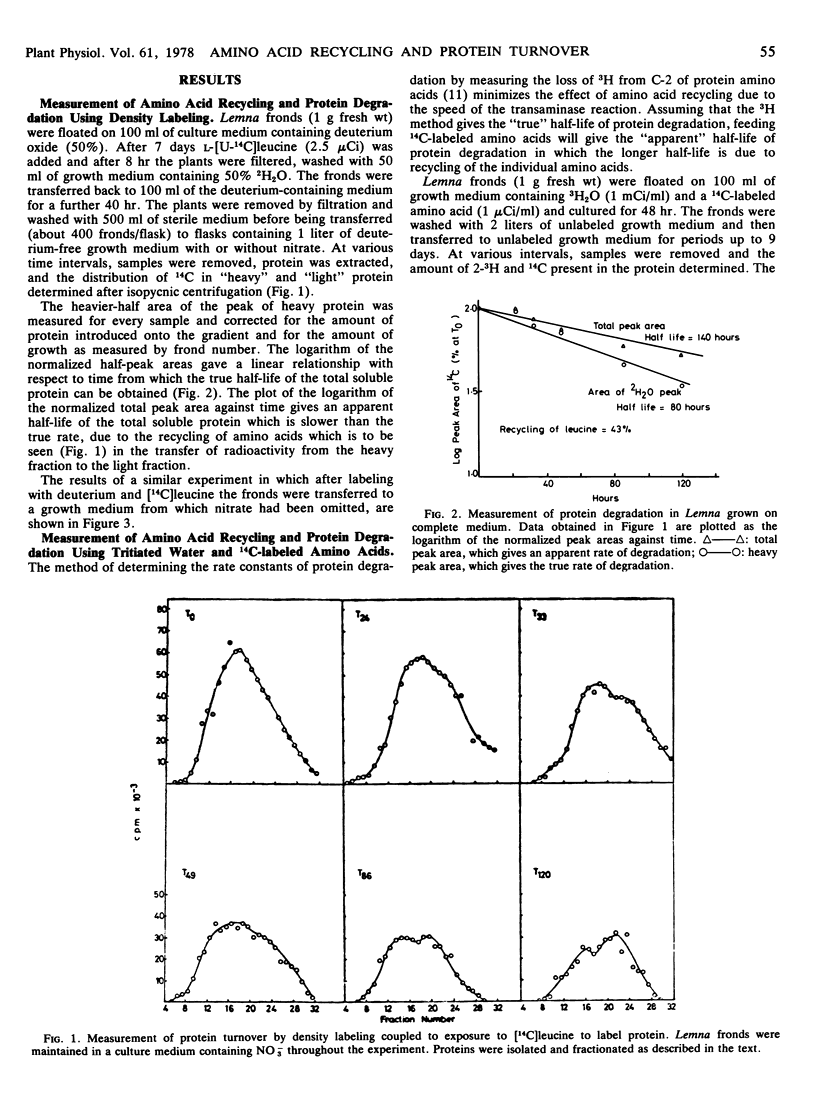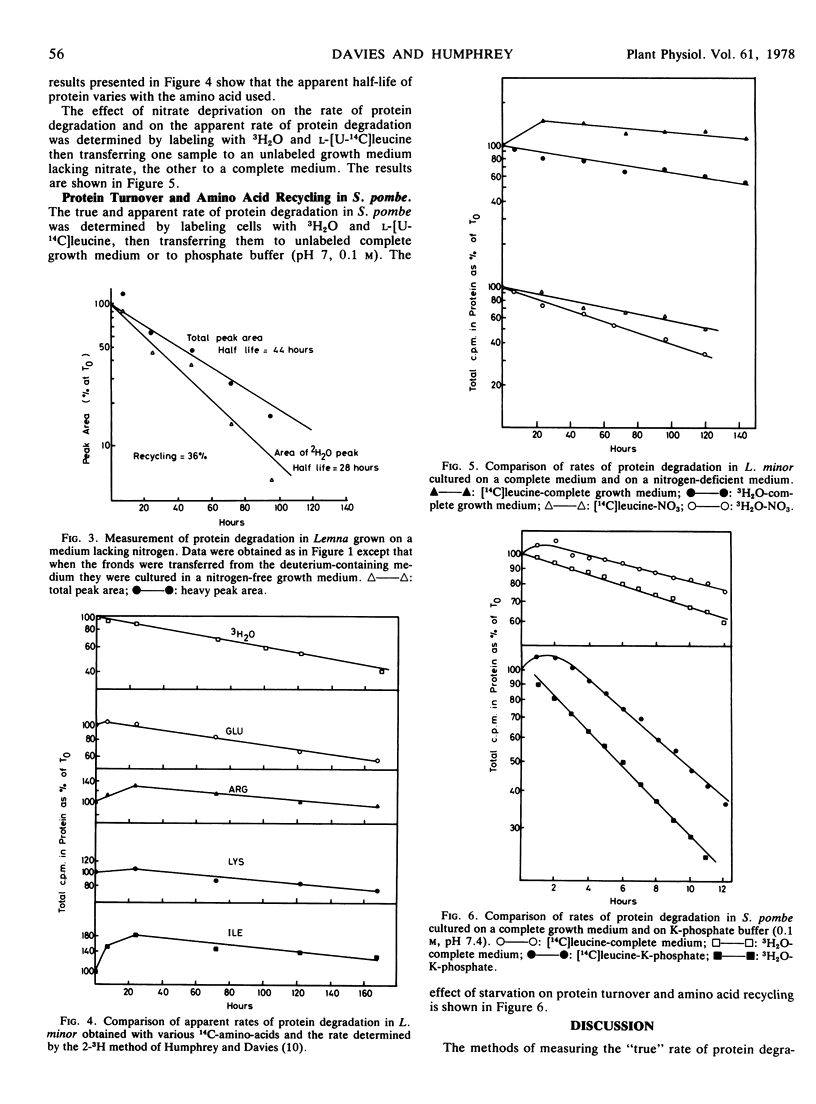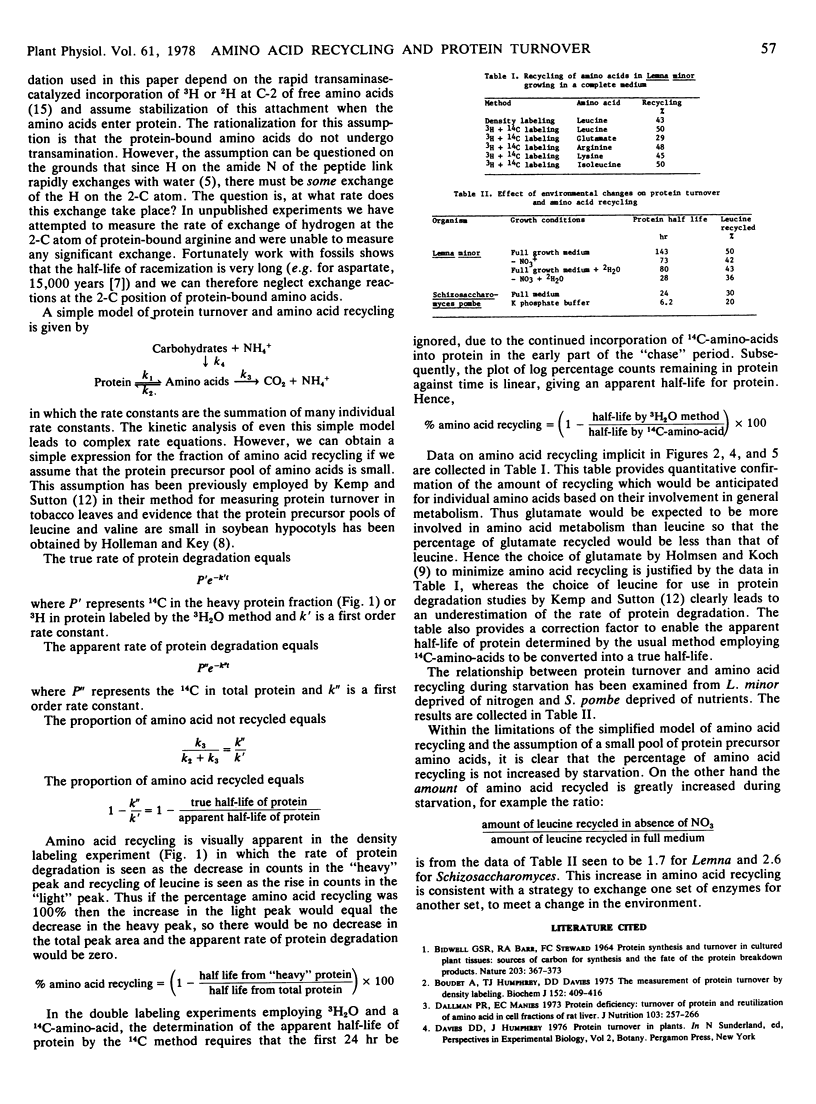Abstract
Methods of measuring amino acid recycling in Lemna minor are described. The extent to which the recycling of individual amino acids may underestimate protein turnover has been measured for a number of amino acids. The methods have been used to study the relationship between protein turnover and amino acid recycling during nitrogen starvation. It is concluded that following the removal of nitrate from the environment, protein turnover is enhanced, the partitioning of amino acids between protein synthesis and amino acid metabolism is relatively constant, but the total amount of amino acids recycling is increased.
Full text
PDF




Selected References
These references are in PubMed. This may not be the complete list of references from this article.
- Boudet A., Humphrey T. J., Davies D. D. The measurement of protein turnover by density labelling. Biochem J. 1975 Nov;152(2):409–416. doi: 10.1042/bj1520409. [DOI] [PMC free article] [PubMed] [Google Scholar]
- Dallman P. R., Manies E. C. Protein deficiency: turnover of protein and reutilization of amino acid in cell fractions of rat liver. J Nutr. 1973 Feb;103(2):257–266. doi: 10.1093/jn/103.2.257. [DOI] [PubMed] [Google Scholar]
- Englander S. W., Downer N. W., Teitelbaum H. Hydrogen exchange. Annu Rev Biochem. 1972;41:903–924. doi: 10.1146/annurev.bi.41.070172.004351. [DOI] [PubMed] [Google Scholar]
- Helfman P. M., Bada J. L. Aspartic acid racemization in tooth enamel from living humans. Proc Natl Acad Sci U S A. 1975 Aug;72(8):2891–2894. doi: 10.1073/pnas.72.8.2891. [DOI] [PMC free article] [PubMed] [Google Scholar]
- Holleman J. M., Key J. L. Inactive and protein precursor pools of amino acids in the soybean hypocotyl. Plant Physiol. 1967 Jan;42(1):29–36. doi: 10.1104/pp.42.1.29. [DOI] [PMC free article] [PubMed] [Google Scholar]
- Humphrey T. J., Davies D. D. A new method for the measurement of protein turnover. Biochem J. 1975 Apr;148(1):119–127. doi: 10.1042/bj1480119. [DOI] [PMC free article] [PubMed] [Google Scholar]
- Humphrey T. J., Davies D. D. A sensitive method for measuring protein turnover based on the measurement of 2-3H-labelled amino acids in protein. Biochem J. 1976 Jun 15;156(3):561–568. doi: 10.1042/bj1560561. [DOI] [PMC free article] [PubMed] [Google Scholar]
- Kemp J. D., Sutton D. W. Protein metabolism in cultured plant tissues. Calculation of an absolute rate of protein synthesis, accumulation, and degradation in tobacco callus in vivo. Biochemistry. 1971 Jan 5;10(1):81–88. doi: 10.1021/bi00777a013. [DOI] [PubMed] [Google Scholar]
- Klevecz R. R. Rapid protein catabolism in mammalian cells is obscured by reutilization of amino acids. Biochem Biophys Res Commun. 1971 Apr 2;43(1):76–81. doi: 10.1016/s0006-291x(71)80088-8. [DOI] [PubMed] [Google Scholar]
- Mitra R., Burton J., Varner J. E. Deuterium oxide as a tool for the study of amino acid metabolism. Anal Biochem. 1976 Jan;70(1):1–17. doi: 10.1016/s0003-2697(76)80042-5. [DOI] [PubMed] [Google Scholar]
- SWICK R. W. Measurement of protein turnover in rat liver. J Biol Chem. 1958 Apr;231(2):751–764. [PubMed] [Google Scholar]
- Varner J. E. The control of enzyme formation in plants. Symp Soc Exp Biol. 1971;25:197–205. [PubMed] [Google Scholar]


